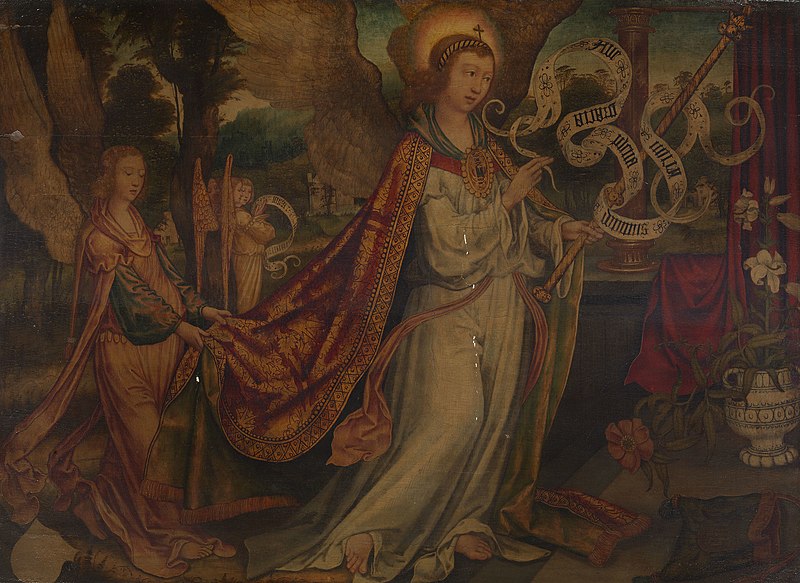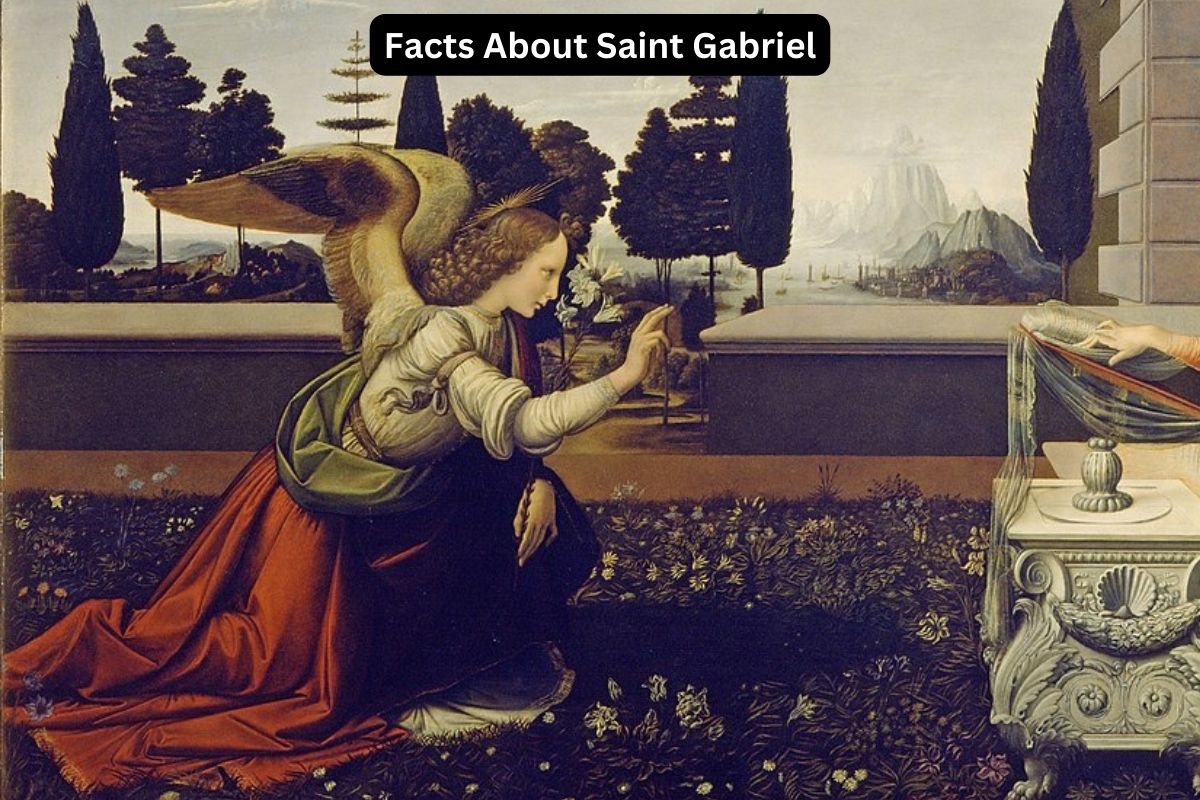Saint Gabriel, also known as Archangel Gabriel in Christianity, is a significant figure in various religious traditions, including Christianity, Islam, and Judaism.
This celestial being holds the role of a messenger between the divine and human realms and is often associated with delivering important messages from God to individuals and communities.
Saint Gabriel is particularly renowned for his pivotal role in the Annunciation, where he announced the birth of Jesus to the Virgin Mary.
In this brief introduction, we will delve into key aspects of Saint Gabriel’s significance and role in these religious traditions.
Saint Gabriel Facts
1. Archangel Gabriel in Christianity
Saint Gabriel, known as Archangel Gabriel in Christianity, is one of the most prominent archangels in Christian theology. Archangels are considered high-ranking angels with special duties and responsibilities.
Gabriel’s role as an archangel is to act as a messenger and intermediary between God and humanity. He is often depicted as a powerful and majestic angelic being, and his name means “God is my strength” or “Hero of God.”

2. Announced the birth of Jesus to the Virgin Mary
One of the most well-known and significant events associated with Saint Gabriel is the Annunciation.
According to the Christian tradition, it was Archangel Gabriel who appeared to the Virgin Mary in Nazareth to deliver the divine message that she had been chosen by God to conceive and give birth to Jesus, the Son of God.
This momentous event is described in the Bible in the Gospel of Luke (Luke 1:26-38) and is celebrated annually on March 25th as the Feast of the Annunciation.
3. A messenger of God in Christianity and Islam
Saint Gabriel’s role as a messenger of God extends beyond Christianity. In Islam, Gabriel is known as Jibril (or Gabriel in Arabic), and he is considered one of the most important figures in Islamic theology.
Also Read: Facts About St Raphael
Muslims believe that Jibril played a central role in delivering God’s revelations to the Prophet Muhammad over a period of 23 years, which culminated in the Quran, the holy book of Islam.
Jibril’s role as a messenger in both Christianity and Islam underscores his significance as a bridge between the divine and human realms in multiple religious traditions.
4. Name means “God is my strength”
The name “Gabriel” has its roots in Hebrew and carries a significant meaning. It is composed of two parts: “Gabri,” which means “God is my,” and “El,” which is a reference to God’s name in Hebrew.
Therefore, the name Gabriel can be interpreted to mean “God is my strength” or “Hero of God.” This name reflects the archangel’s role as a messenger and servant of God in both Christian and Islamic traditions.

5. Feast of the Annunciation on March 25th
In the Christian tradition, the Feast of the Annunciation is celebrated on March 25th each year. This feast commemorates the visit of Archangel Gabriel to the Virgin Mary when he announced that she would conceive and give birth to Jesus, the Son of God.
It is a significant event in Christian theology as it marks the moment when God’s plan for the salvation of humanity was set into motion through the incarnation of Jesus. The feast is observed with special liturgical services and devotions.
6. Patron saint of messengers and communication workers
Saint Gabriel is regarded as the patron saint of various groups and professions. He is especially revered as the patron saint of messengers and communication workers.
This association with messengers and communication is rooted in his role as a divine messenger who delivered important messages from God to humanity.
Those who work in fields related to communication, such as postal workers, telecommunication professionals, and diplomats, often turn to Saint Gabriel for guidance and protection in their work. His intercession is believed to help ensure clear and effective communication in these professions.

7. Depicted with wings, lily, or scroll in art
In Christian art and iconography, Saint Gabriel is often depicted in various ways to symbolize his role as a messenger and his attributes. Some common elements found in artistic representations of Saint Gabriel include:
- Wings: Gabriel is typically portrayed with large, majestic wings, signifying his angelic nature and his role as a heavenly messenger.
- Lily: Another common symbol associated with Gabriel is the lily, which represents purity and divine grace. It is often seen in his hand or nearby in depictions of the Annunciation, symbolizing Mary’s purity.
- Scroll: Gabriel may also be shown holding a scroll, which represents the messages he carries from God to humanity.
8. Also mentioned in Jewish tradition
While Saint Gabriel is most commonly associated with Christianity and Islam, he is also mentioned in Jewish tradition. In some Jewish texts and traditions, Gabriel is considered one of the archangels or angelic beings who serve as messengers of God.
His appearances in the Bible include delivering messages to the prophet Daniel and playing roles in various biblical events.

9. Part of the archangelic hierarchy in Christian angelology
Saint Gabriel is often considered part of the archangelic hierarchy in Christian angelology. This hierarchy typically includes three archangels: Michael, Gabriel, and Raphael.
Each archangel is believed to have specific roles and responsibilities. Gabriel’s role is primarily that of a messenger, while Michael is seen as a protector and defender, and Raphael is associated with healing.
10. Key role in delivering important messages from God
One of Saint Gabriel’s primary functions is to serve as a messenger between God and humanity. Whether in the Christian tradition, where he announced the birth of Jesus to Mary, or in the Islamic tradition, where he delivered revelations to the Prophet Muhammad, Gabriel’s role is pivotal in conveying divine messages and guidance to individuals and communities. His presence underscores the importance of clear communication and the transmission of God’s will to humanity in various religious contexts.
